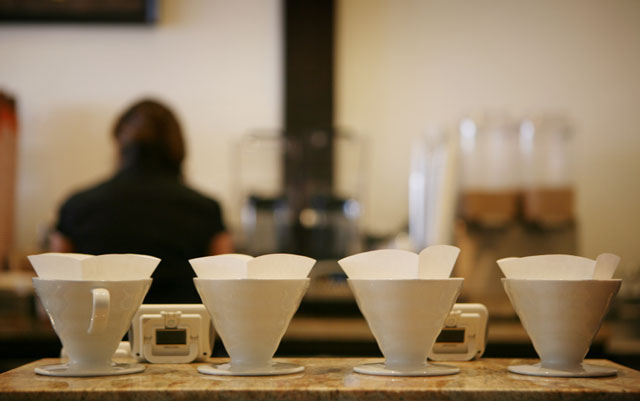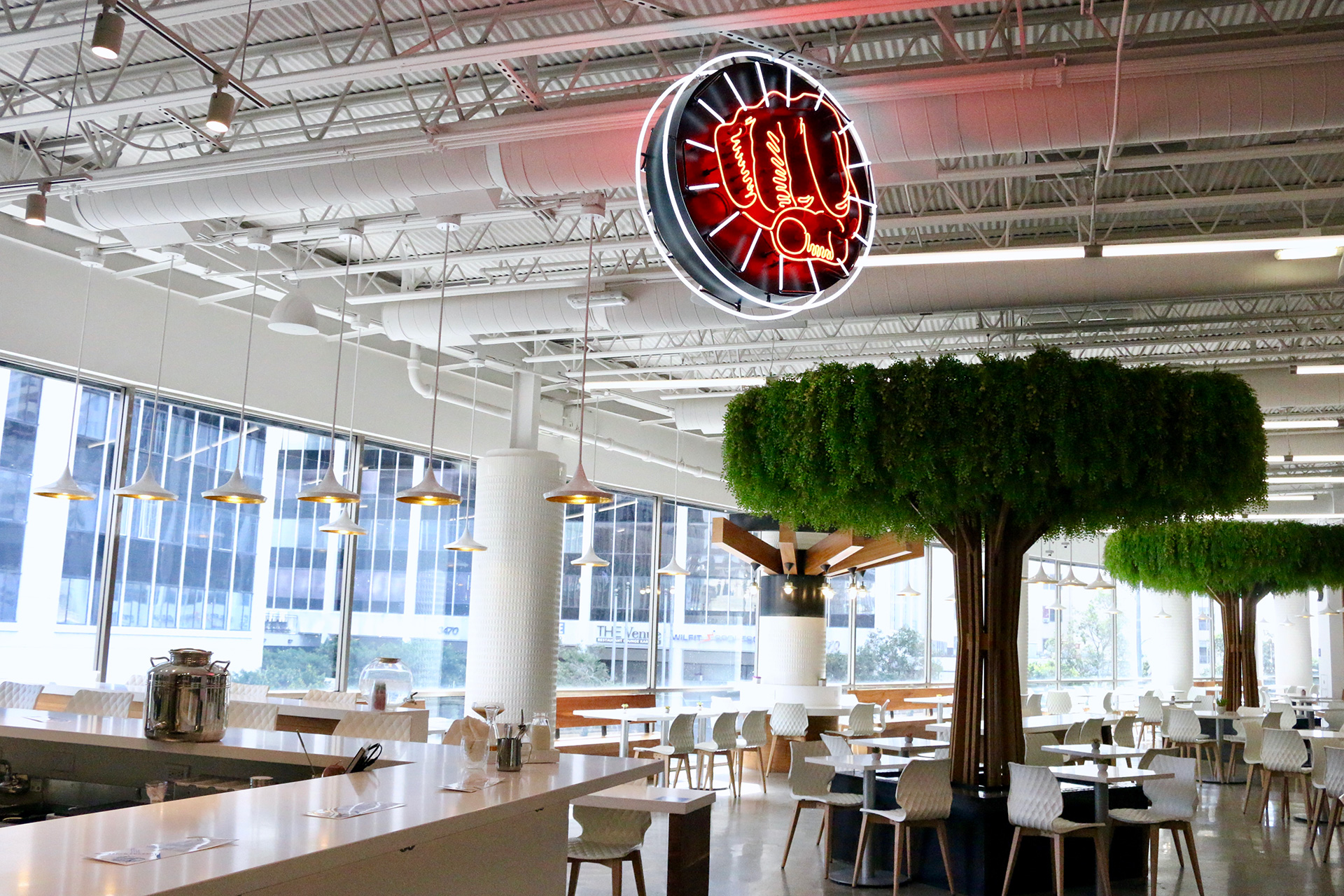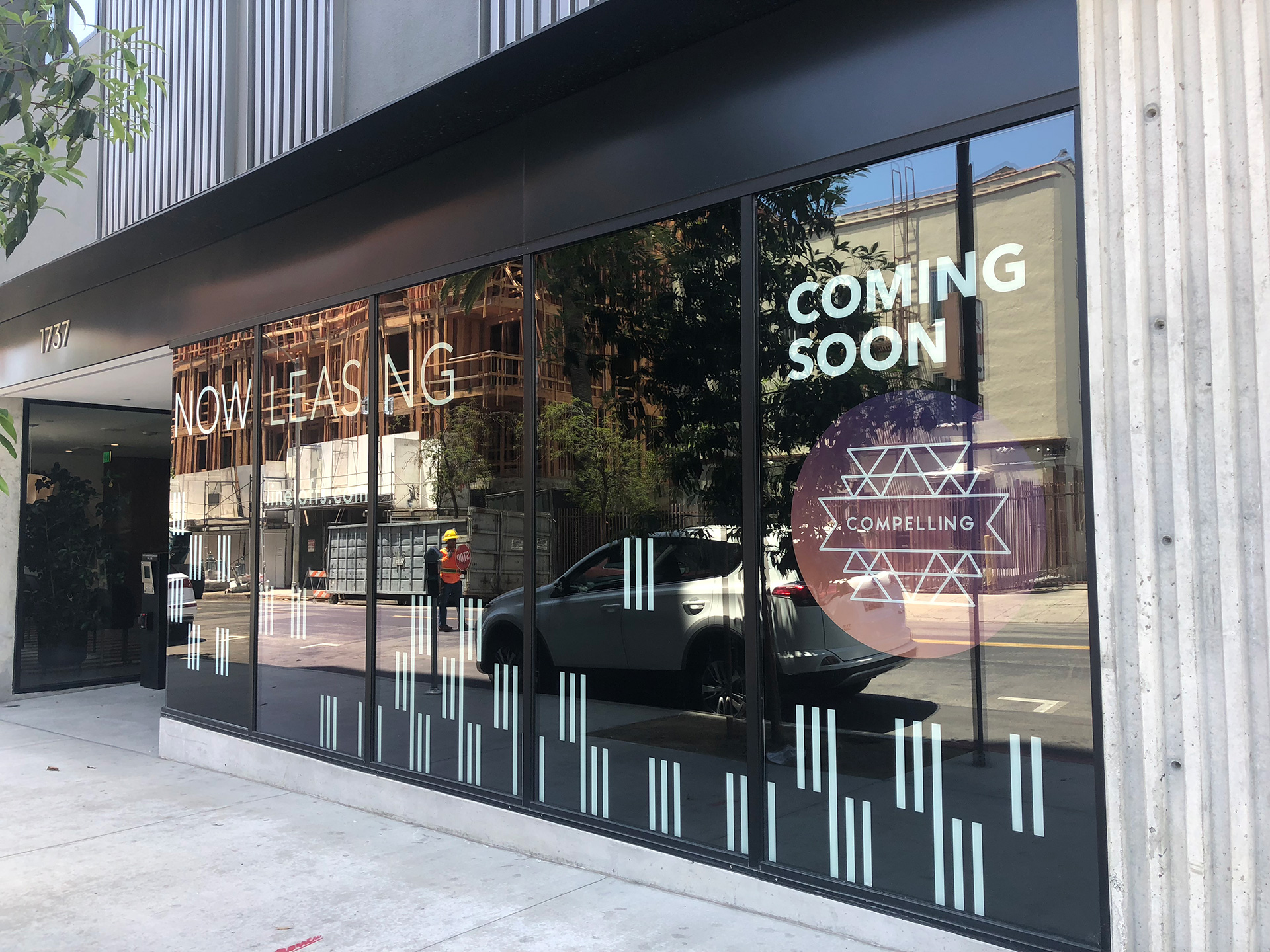We continue with part 2 of Julie Wolfson’s exclusive inside look at the brand new Tierra Mia in Echo Park. When we last left off [PART 1 HERE], Wolfson was at a huge party with the Tierra Mia Coffee family, enjoying carnitas and lamb meats while chatting with Ulysses Romero, the visionary behind TMC. We rejoin them at the party, where Julie continues her conversation with Ulysses.
You just opened your sixth café. How did you find this space for your new location?
Before I opened our first store, six years ago, I was looking around trying to find a spot. I came across this intersection and I thought it would be great for us. I saw on the wall the sign for the “Downbeat Café”, and I remember thinking I wish I had that location. This is a really interesting corner that combines the Hispanic population and the local coffee drinking population. There is a ton of traffic from the two major streets that run through LA. I like that the sign on the side of the building is almost like a billboard, the way it is presented to the intersection. Six years later we were able to get it. We will serve the same Tierra Mia menu of brewed coffees, espresso drinks, and pastries.
How do you describe the concept behind the coffee menu?
The idea was to create a concept that would appeal to the most people. We have added a few menu items. We always try to improve the quality, going from buying from other suppliers to roasting our own coffee and baking our own pastries. We have tried to improve on equipment, on staff on training and execution on a daily basis. The thing that stands out the most is that we are a Latin coffee concept. We offer high quality basic coffees and Latin specialties. We have a core focus of offering high quality coffee and a broad menu to appeal to the different types of coffee drinkers, whether they want an espresso, a black coffee, a latte, or something cold. We train the staff to make everything from a classic pour over to a frappe and to do both really well.
Why was it important for you to offer frappes?
With the goal initially to cater to the Hispanic population, and what I saw in the community is that 40 to 50% of sales were for cold blended drinks. To improve our chances of success, I needed to offer frappes. When I tasted the products that were available from companies that make bases for frappes, I felt they were artificial tasting, so I took a stab at making my own.
In my parents’ house, where we are having the five year anniversary party, is the place I came up with the idea of Tierra Mia. I set up an espresso machine in my mom’s kitchen and developed the menu. For the frappes I started with milk, ice, coffee, sugar and made some slush. From there we tweaked it until we got to a recipe I liked. I spent well over a year working on it. Now we have an ingredients company produce it for us. We go through about two thousand pounds every three weeks.
Folks in LA know that you’re famous for one particular cold blended drink. How did the “Rice & Beans” frappe come about?
We did not have it one the original menu. One of my first supervisors joked that we should have a rice and beans frappe, meaning actual rice and beans. I kind of laughed about it then realized we could make one through a play on words. The drink has horchata, which is made of rice, and obviously the coffee beans – an espresso and horchata frappe. It has a lot of layers of flavor, and is not super sweet.
What coffees did you serve when you started Tierra Mia?
The first year and a half we served Intelligentsia, then we started to bring in a little bit of Stumptown on our pour over bar. About 2.5 years after that, we started we began roasting.
Why did you make that transition? Why did you want to add that to all of your responsibilities?
It made sense for us to make an investment in a roasting facility. I felt that when we reached a certain number of stores, we would start roasting. I had to work out the economics of when it made financial sense for us. I wanted to be able to determine what we wanted to serve on the bar. There were certain coffees that we liked and certain profiles that we like.
Do you generally feature Latin American coffees?
Typically we try to have two or three from Latin America and one African. I love African coffees. African coffees are very popular amongst our staff. We try to offer a nice rounded menu that has coffees from different countries based on when they are coming in season. We try to balance it out so we have coffees that each have something different to offer.
After this Echo Park location you will head up North?
Next we open in San Francisco in Bernal Heights, where Mission and Valencia intersect. We will finish this Echo Park location and head up there. The woman who I bought the café from up there refers to section of Bernal Heights as the Echo Park of San Francisco. It’s kind of interesting that we are doing both back to back.
Your downtown Los Angeles location is in the building where you live. How did that happen?
I had been living downtown for about a year. The owner of a small Mediterranean café was looking to move on. We were able to work something out which was perfect, since it is downstairs from where I live. It makes my job a little bit easier. Some days I can work from home. I can do more quality control on our menu. I cab try what we have on bar at pretty much any hour of the day. It’s going well. We get new people in everyday. I think they are somewhat surprised. Some people had not heard about us and then they realize that our coffee is good. The pricing on our brewed coffees is very reasonable like a Panama Geisha for $3.95 and our Mexico micro lot for $3.25. We want to make good coffee that is accessible. We want people to try it. Because we are roasting, we still make something on each coffee we sell. I think that if they know they can get really good coffee we will be successful at our business.
Before coffee you were working on the financial world in New York. What have you learned in the five years running TMC?
As I approach our business and think about everything that we do, there are a few things that are always on my mind. There is an overall theme of quality. It’s almost a fear of not doing enough. That drives me to always offer the best quality possible on the whole menu from beginning to end. Not just good ingredients, but being able to execute that menu and do it consistently day after day in all the stores. Being successful means being able to execute on a ton of small details and being able to do them all well. Nothing is particularly complicated. The complicated part is just being organized.
What do you look for in staff members?
There are three things I tell my managers to look for when they are interviewing. I want people that are smart, hard working, and humble. The smart part is so that they can understand what it takes to make good coffee, and being able to adjust to the coffee when you get it. The hard working part is being able to produce drinks everyday. People come in for coffee because they want a break. They want to wake up. They want to relax. They want a positive experience. Being humble allows you to provide good customer service and a good experience for the customers.
TMC now has more than 90 employees. Is there where you thought you’d be in 2013?
Years ago when I worked at the United Way part of what we did was job training. Now the thing that is really satisfying for me is the number of jobs that we are creating. We now have ninety people and with San Francisco, we will eclipse one hundred. It makes me feel good about what we are doing. Our managers are now receiving full time salaries. It makes an impact financially for people and helps our local economy. When I think about our growth and decision on opening stores, obviously my plate if going to be very full. I think about the impact that’s going to make. I feel like I should not get in the way of what the company can become. We have staff members that are driving that on the retail side. It’s not just me anymore. What I need to do is just guide the ship.
Julie Wolfson is a contributor to Cool Hunting, CBS Los Angeles, Tasting Table, and several other publications including this one. A native Californian, she lives and writes in Los Angeles.
Originally photography by James Hanna.








































